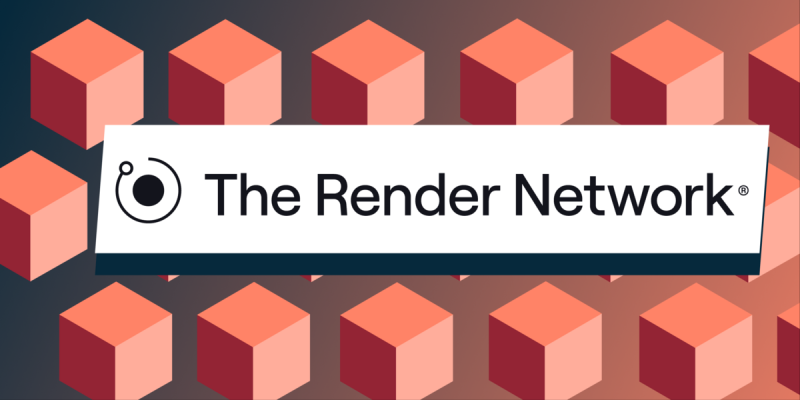 |
|
 |
|
 |
|
 |
|
 |
|
 |
|
 |
|
 |
|
 |
|
 |
|
 |
|
 |
|
 |
|
 |
|
 |
|
Cryptocurrency News Articles
Render Network and RNDR: A Powerhouse for Decentralized GPU Computing
Mar 25, 2024 at 05:34 pm
Render Network is a decentralized platform that connects individuals and entities seeking GPU computing power (Creators) with those possessing idle GPU resources (Node Operators). Creators can rent this power on-demand for tasks such as rendering high-quality graphics, training AI models, and simulating physical processes. The platform utilizes blockchain technology and smart contracts to facilitate transparent and secure transactions, ensuring fairness and efficiency. The native token, RNDR, serves as the medium of exchange for rendering jobs and as a governance token, allowing community members to participate in decision-making. Render Network offers scalability, privacy, security, and cost-effectiveness compared to centralized cloud providers, catering to a growing demand for GPU computing in industries like film, gaming, and artificial intelligence.

What's the Deal with Render Network and RNDR?
Render Network, a peer-to-peer platform, harnesses idle GPU power from individuals and businesses (Node Operators) to cater to the computational needs of content creators and AI applications. Transactions on this network are securely processed and transparently recorded using blockchain technology and smart contracts. RNDR, the platform's native token, fuels the payment for rendering jobs.
Key Takeaways
- Render Network is backed by OTOY, a reputable cloud rendering company.
- It pools dormant GPU capacity, creating a marketplace where individuals and entities can tap into this idle power for demanding graphics processing, AI model training, and more.
- Render Network offers Creators scalability, privacy and security, and transparency by leveraging Proof-of-Render to oversee job validation and compensation for Node Operators.
- Node Operators earn RNDR for completing jobs. RNDR also serves as the governance token, experiencing a surge in value due to the growing interest in AI.
- In 2023, RNDR witnessed a remarkable 1,000% increase in value. This rise can be attributed to the surge in AI demand and the subsequent shortage of GPUs for training AI models, a need that outstrips the supply from major cloud providers like AWS, Microsoft, Google, and Oracle.
Render Network: A Solution for GPU Bottlenecks
Render Network's design addresses the computational infrastructure bottleneck, where centralized GPU clouds struggle to meet the escalating demand for computing power, leading to inflated prices and limited availability. Render Network connects those seeking GPU power (Creators) with those possessing idle GPU resources (Node Operators).
Overcoming Centralized Cloud Limitations
Render Network overcomes the limitations of centralized clouds by renting out dormant GPU power to Creators and other protocols. Device owners worldwide can become Node Operators, contributing their idle GPUs to the network and earning RNDR for completing rendering jobs.
Cost-Effective and Accessible GPU Power
This setup enables Creators and applications to access GPU power for rendering high-definition graphics or training AI models at a significantly lower cost compared to centralized GPU clouds. Render Network has emerged as a prominent protocol in both DePIN (where major studios have incorporated it into their production workflow) and the AI space.
Jules Urbach's Insights
"In the case of DePIN...studio movies have been rendered on decentralized nodes in our system with end-to-end encryption — you’re getting faster speed, you’re getting one tenth of cost, you have massive availability, and a ledger can authenticate what an image is or where the data came from, that’s built into the crypto part of it — we have Proof of Render.
Generative AI on the inference and training side also fit to the kinds of GPUs that are already on Render. You don’t need an H100 to do training on generative video. One of the more exciting propositions for us is we look at the Apple ecosystem where you have GPUs with 120 gigabytes of video memory, those are out there in the tens of millions. Tapping into that is going to be a massive win over the cost of the scaling issues we have on centralized clouds. That’s where I see huge advantages of decentralized approaches like we have.”
— Jules Urbach, Founder @ Render
Migration to Solana
To accommodate growing demand and anticipate future network expansion, the Render Foundation has opted to migrate Render Network to Solana. This decision was driven by factors such as blockchain throughput, where Render Network claims to surpass Ethereum's transaction processing capacity. Additionally, emerging technologies like Merkle Tree compression for NFTs, developed by Solana Labs and Metaplex, offer promising opportunities for new applications.
How Render Network Operates
Render Network's operation comprises:
- A blockchain network
- Creators who generate jobs requiring GPU power
- Node Operators who contribute idle GPUs to the network
- OctaneRender, the rendering engine used in the Render Network client
- A multi-tier pricing protocol
- Proof-of-Render, a consensus system that governs overall operation
Blockchain Integration
Initially deployed on Ethereum, Render Network has recently expanded to Solana, with plans for an eventual transition to the latter. The blockchain layer manages payments, utilizing public ledgers to ensure transparency in Creator-Node Operator interactions. All parties can verify that transactions are processed correctly and, if necessary, identified and rectified.
Job Creation and Allocation
Creators seeking GPU power from Render Network create a job, specifying task details. The fee is determined by job parameters and network resource availability.
Node Operator Participation
Node Operators employ OctaneRender, a rendering application developed by OTOY, the graphics development firm behind Render Network. To safeguard privacy and security, the system utilizes end-to-end encryption and hashing, among other measures.
Multi-Tier Pricing Protocol
A multi-tier pricing protocol governs job allocation. It employs a reputation-based system to rank Node Operators, enabling Creators to choose from three pricing tiers:
- Tier 1: Reserved for the project's trusted partners
- Tier 2: For Creators seeking high-quality service
- Tier 3: Economy tier
Tier 1 services are handled by highly rated Node Operators and typically executed faster. Node Operators with higher ratings receive more job allocations.
Proof-of-Render (POR)
Render Network's Proof-of-Render (POR) consensus algorithm orchestrates job processing. Similar to Proof-of-Work, Node Operators commit their computing resources (GPUs) to process tasks. However, instead of solving mathematical puzzles, the tasks here involve graphics rendering jobs. Upon job completion, the POR algorithm updates the Node Operator's status, including reputation score adjustments based on task quality.
Benefits of Render Network
- Scalability: Creators access on-demand GPU power, renting as much as needed for their projects.
- Privacy and Security: Render Network safeguards Creators' privacy and assets through measures like encryption, limited asset storage, and frame watermarking.
- Transparency and Fair Pricing: Render Network offers transparency for both Creators and Node Operators. Blockchain-based payments ensure verifiable transactions. A multi-tier pricing system allows users to pay based on their requirements and budget.
Use Cases of Render Network
Render Network's GPU processing power finds applications in various fields, including:
- Film, Games, and Other Media: High-quality graphics are crucial in film and game development. Render Network provides Creators with scalable GPU power to bring their visions to life.
- Artificial Intelligence (AI): Render Network explores support for AI and machine learning tasks. The integration will enable Node Operators to take on rendering jobs for AI-generated graphics and prototypes.
- Architecture and Product Design: Architects and product designers can utilize Render Network to create high-quality 3D visualizations and prototypes.
Render Token (RNDR) and Its Utility
RNDR is the native token of Render Network. Integrated into the platform's growth and development plans, RNDR has several use cases:
- Governance: As the governance token, RNDR empowers holders to influence project decisions and community development.
- Job Payments: RNDR is the base currency for paying Node Operators for rendering jobs.
- Burn and Mint Equilibrium: This tokenomics model aims to enhance RNDR value through a balanced pricing and remittance system.
Rise of Render Token (RNDR)
RNDR has experienced a consistent upward trend since Q4 2023. In March 2024, it reached a new all-time high of $13.53. Factors contributing to this surge include the growing interest in AI, Nvidia's record quarterly revenue, and the availability of free OctaneRender VFX software for Mac Pro hardware users.
Final Thoughts
As the demand for AI and next-generation media continues to grow, so does the need for GPU computing power. Render Network's vast network of idle GPUs offers scalable, cost-effective solutions for Creators and Node Operators alike. By leveraging blockchain technology and smart contracts, Render Network creates a transparent and decentralized marketplace for GPU power, empowering Creators and monetizing idle GPUs for Node Operators.
Disclaimer:info@kdj.com
The information provided is not trading advice. kdj.com does not assume any responsibility for any investments made based on the information provided in this article. Cryptocurrencies are highly volatile and it is highly recommended that you invest with caution after thorough research!
If you believe that the content used on this website infringes your copyright, please contact us immediately (info@kdj.com) and we will delete it promptly.
-

-

- Two Highbury Preparatory School learners stumble on a surprise find under the sand near a jungle gym – a 1c coin dating all the way back to 1961
- Apr 12, 2025 at 10:30 pm
- Two learners from Highbury Preparatory School in KZN recently stumbled on a surprise find under the sand near a jungle gym – a 1c coin dating all the way back to 1961
-

-

-

-

-

-

-




















![Crypto Otaku - CRYPTO CHAOS! 83K BITCOIN! CRYPTO RALLY!! XCN , JASMY , SWFTC LEAD!!! [Episode 228] Crypto Otaku - CRYPTO CHAOS! 83K BITCOIN! CRYPTO RALLY!! XCN , JASMY , SWFTC LEAD!!! [Episode 228]](/uploads/2025/04/12/cryptocurrencies-news/videos/crypto-otaku-crypto-chaos-k-bitcoin-crypto-rally-xcn-jasmy-swftc-lead-episode/image-1.webp)









































